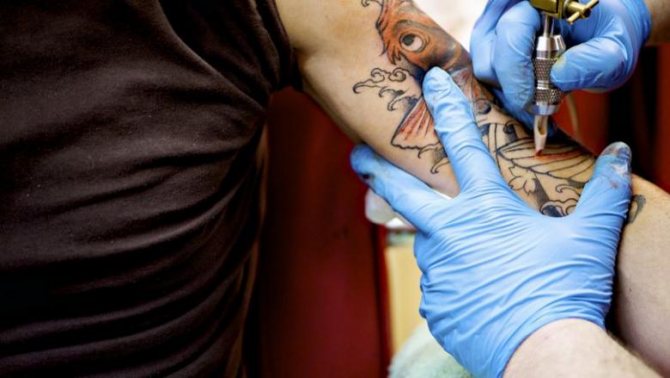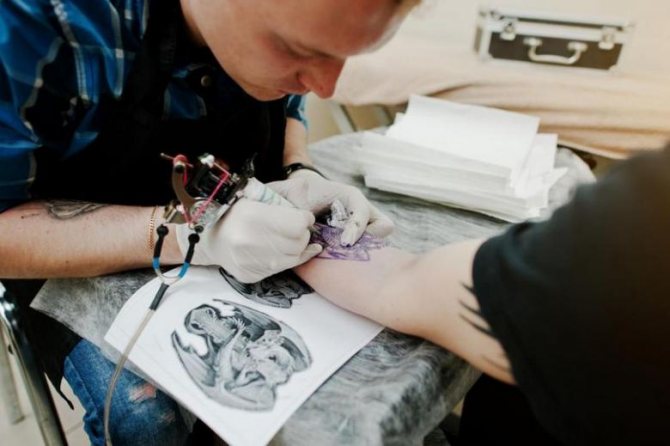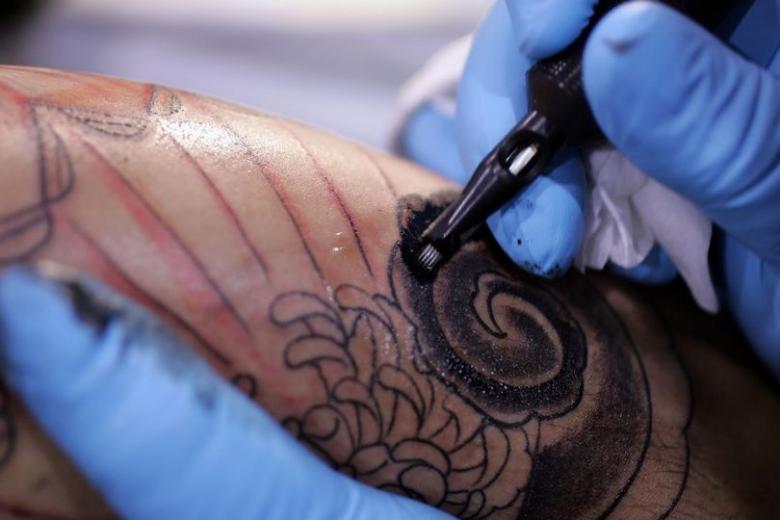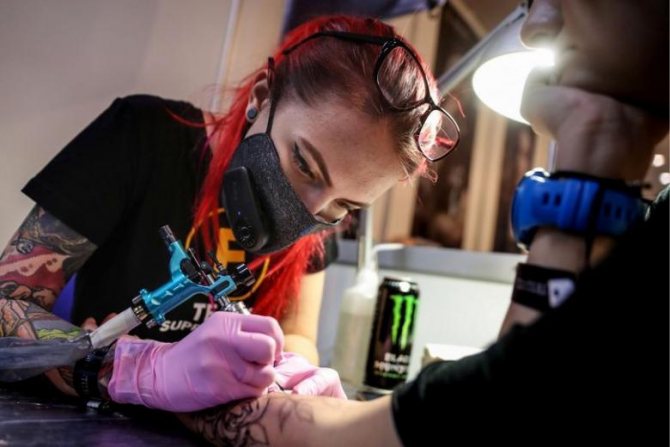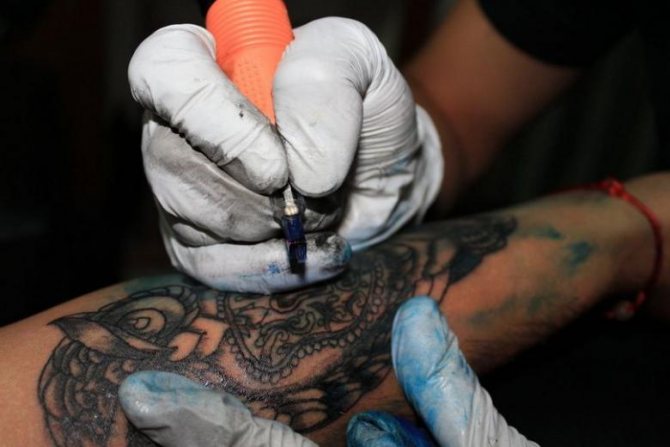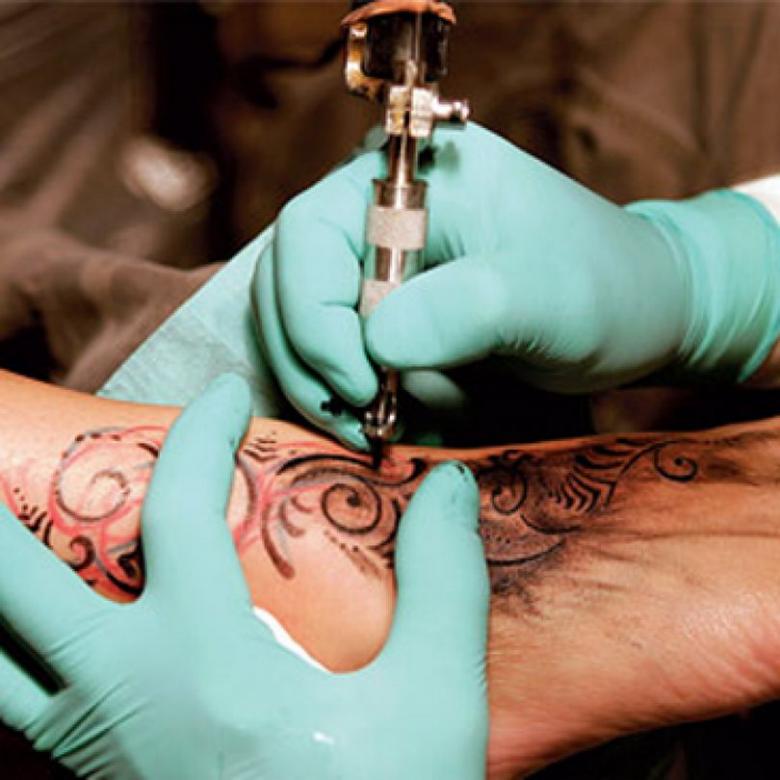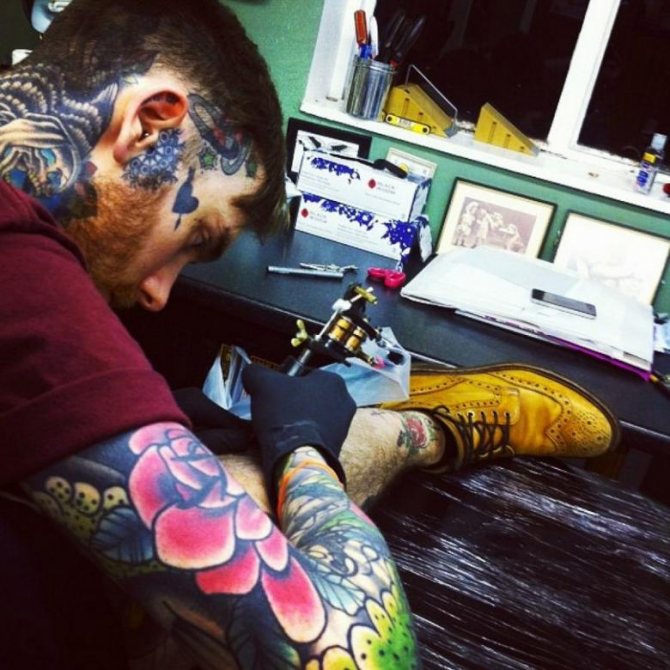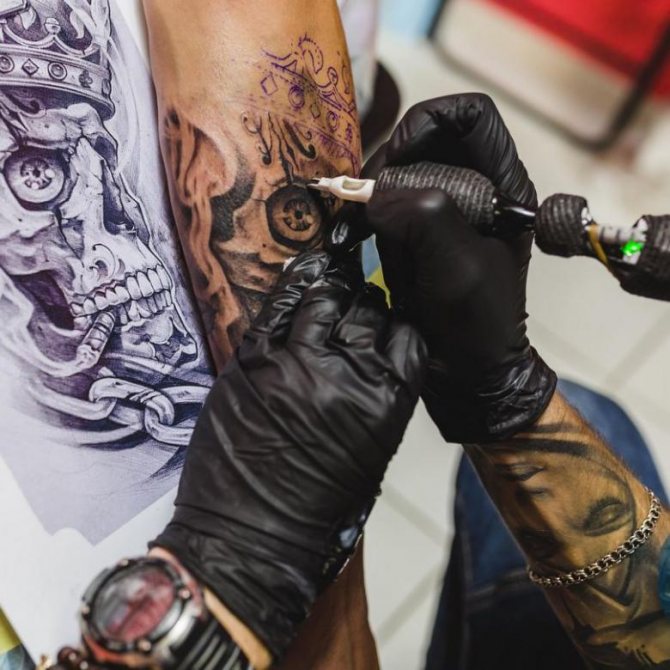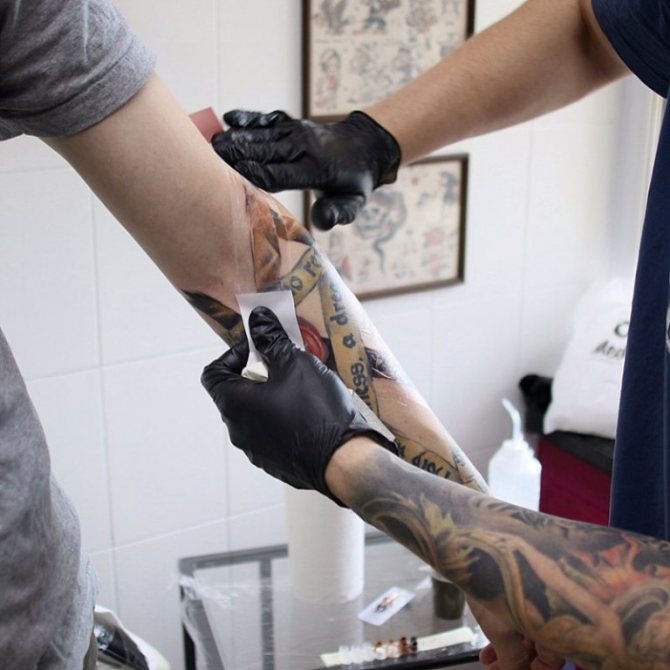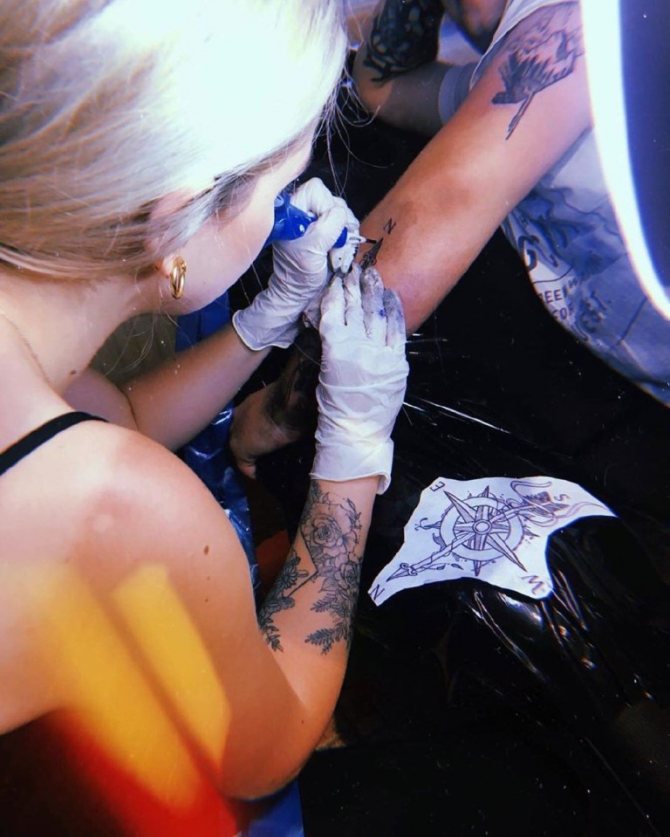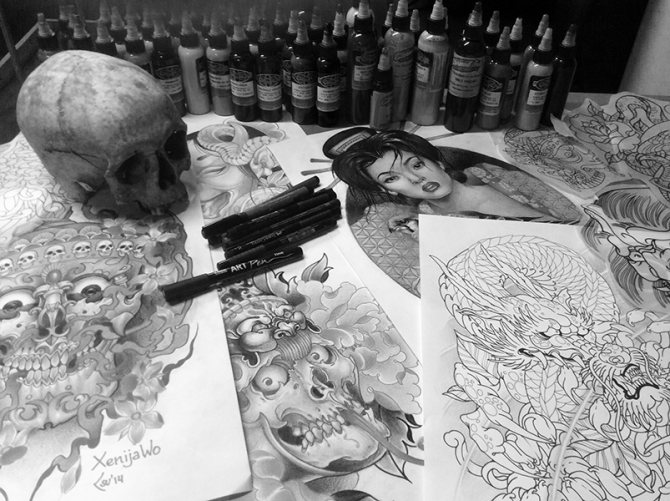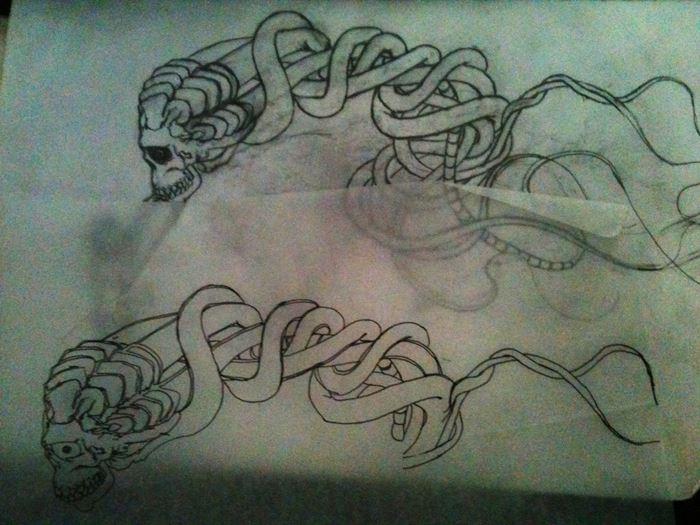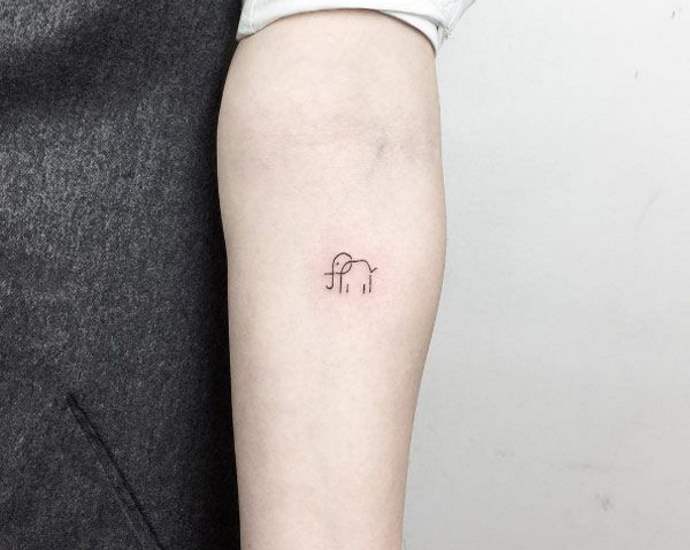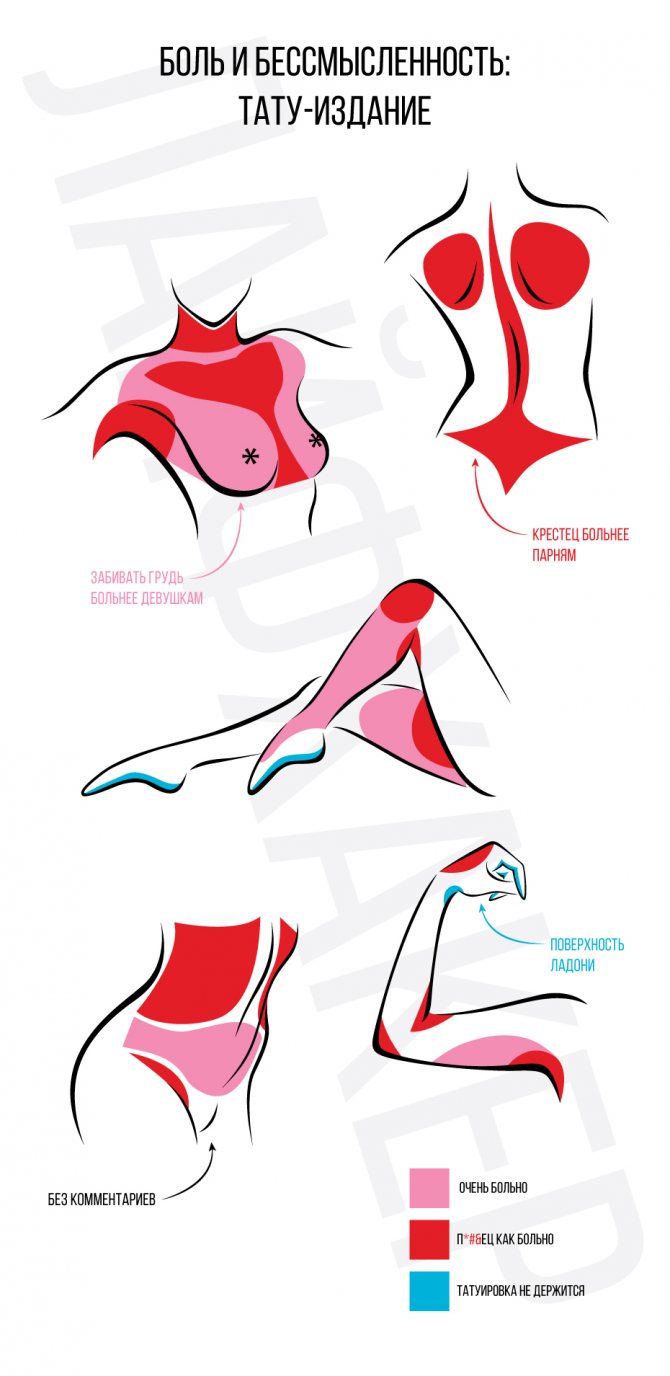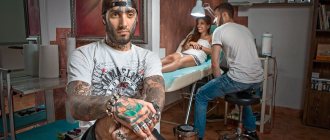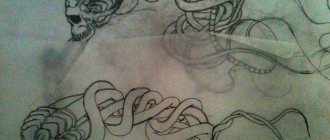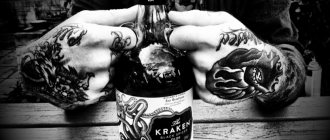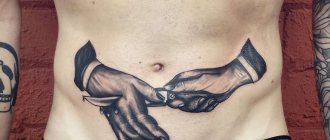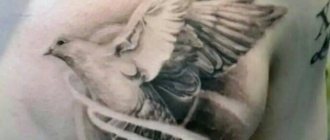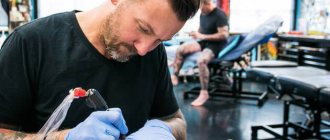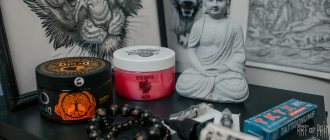A few decades ago in our country tattoos were made mainly by the military, people who had been in places not so distant, representatives of subcultures. Today, the attitude toward the application of body images has changed dramatically. Tattoo parlors are actively visited by students and not very young people, men and women, representatives of various professions and social layers of society. Many of those who are just going to make the first tattoo, want to know how to do tattoos correctly and what technologies are used today.
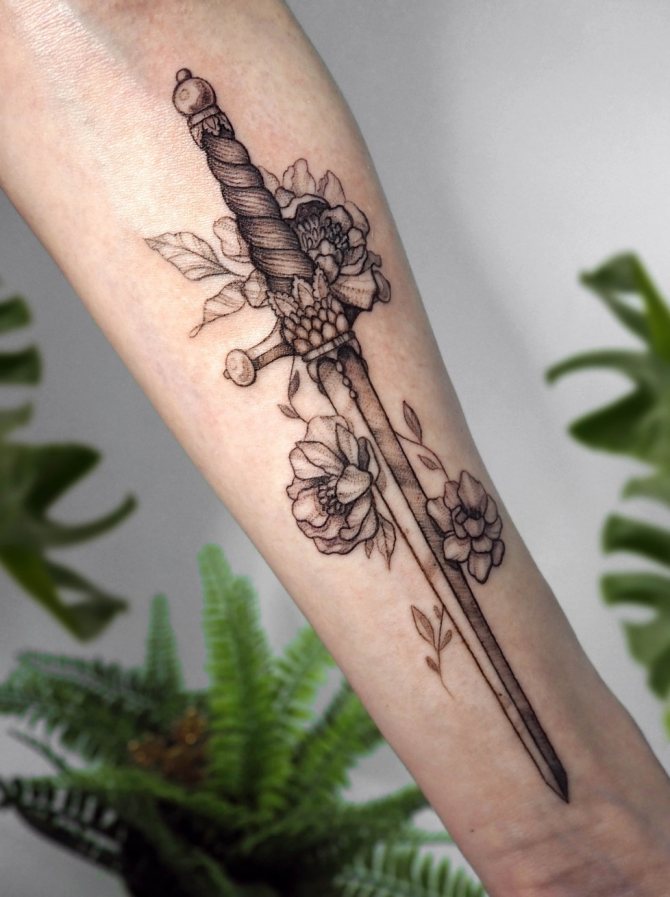
How tattoos are done


Let's understand what a tattoo is in its essence. A tattoo is a permanent or permanent drawing on the body that is applied by traumatizing, piercing the top layer of the skin, followed by the introduction of pigment into the dermis.
Before the image is painted on your body, there are several stages, which we will discuss below.
Choice of design and body part


Choosing a drawing and choosing a body part are the most important points for a person who is going to subject his flesh for this cosmetic surgery. You also need to remember that the two are inseparable and adjust one to the other. The choice of the sketch depends on the purpose of the tattoo. It can be just an aesthetic pattern or an image with a meaning, as something personal as well as having a common meaning for all. As for the parts of the body, from a social point of view, it is not necessary to "score" the head, neck, hands, groin area.
correcting the pattern, the details
After the final definition of the pattern and the place, the work of the master begins. For the beginning he should adjust, correct the pattern in accordance with the realities of the body, because you understand that on paper is one thing, but in the curves of the body is another. Once the updated sketch is ready and agreed with the client we can move on to the next stage.
preparation for the application


Preparation for the application is a very responsible moment that requires a lot of attention from both sides of the procedure. On the part of the client is the preparation of the body, or rather blood. Do not take medications, especially those that help thin the blood and reduce its clotting, that is, antipyretic and painkillers, such as acetyl acid, paracetamol, analgin. Also, you should not, during the application, be sick with a cold, drink alcohol or be hung over.
On the part of the tattoo master is to ensure the sterility of the entire procedure. He should only wear gloves, change the needle in front of you, and treat the instrument and the skin surface with antiseptic. You should not forget that it is a small operation, but about that further. Also included in the preparation of the tattooist is the drawing of a sketch. It is applied with the help of special paper, by the method of application which is similar to an ordinary carbon copy. During the work, the sketch on the body is treated with petroleum jelly, so that the picture is not erased.
application process


So, now begins the process of applying the tattoo. Modern tattoo masters use an induction machine, but by and large you need only a sharp needle, ink and a mechanism that will pierce the skin with a certain force. Let's look at an example of a more modern method.
The instrument is turned on and brought to the body. The needle is impregnated with a small amount of pigment and it pierces the stratum corneum of the skin and penetrates into the dermis. The dermis is a layer of skin that is slightly deeper, in which the sebaceous glands and hair follicles are located. A dosed amount of dye remains in it. This piercing occurs thousands of times and at this time the master slowly leads the machine along the drawing of the sketch.
The application always begins with an outline, which is scored with one fine needle. Then the shadows are scored. The modern machine has a tip so that you can put several needles at once and the scoring line will be thicker.
healing process
After the ringmaster will score all the tattoo pattern it will need care, but more about this later. The healing process is individual. Time of healing varies depending on the amount of fat layer on the tattoo, where more there is faster, also from the thickness of the lines. Chest, abdomen, thighs, buttocks - from 4 to 7 days, the other parts such as arms, back, neck, lower leg - from 1 to 2 weeks.
On the first day of healing, the tattoo will be swollen and there will be mucus with pigment, it means that the healing process of the skin has gone. On the second day, the skin begins to take the ink and no longer secretes the suds for cleansing, there is a feeling of dryness and tightness. On the third day, it starts to itch a lot, but you can't do that categorically. It is possible to spank the place of irritation a little.
Pre-application measures
The master must establish contact with his client and conduct a thorough and detailed briefing. He is obliged to tell in detail what can and what is not recommended to do during the procedure, what possible consequences or complications occur after it. For the client should not be a secret such information - he has the right and should know it.
Before going to the tattoo salon it is strictly forbidden to take alcohol
. It is connected with the fact that alcohol dilates blood vessels. When working with the skin master will certainly use the needles. This means that the puncture will inevitably affect the blood vessels, which means that there will be small bleedings. And if the blood vessels are dilated from the effects of alcohol on them, it is difficult to call such bleeding small - and it is much more difficult to stop it. In addition, when taking alcoholic beverages, as a rule, the blood pressure rises. And this promotes the activation of hematopoietic processes - and as a result
The dye is flushed out of the skin
.
In preparation for the procedure, the skin is subjected to a special treatment. The selected area is carefully freed from the hairs, shaving them. Then the skin is degreased and disinfected with special compositions. The degreasing procedure is carried out with the use of green soap or an alcoholic solution.
After that, the skin is treated with gel or gel deodorant. The product is applied evenly and thinly, otherwise you run the risk of a fuzzy, blurry image
.
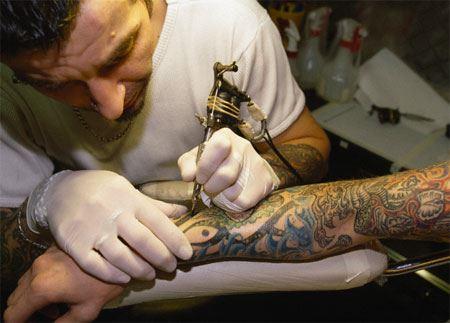

Basics of care


The most important principle in the care of the tattoo in the first stages of healing is to eliminate the entry of infection into your damaged epidermis. Immediately after the end of the work, each master should wrap the tattoo in foil, or better in a bandage. The bandage can be kept on for longer, but not more than 24 hours.
After removing the bandage, you should wash the tattoo with warm water and soap, after which on no account wrap it back up. It is important not to use cold or hot water, also do not use a washcloth. Just gently wash your wound with your fingers.
After rinsing, you should not wipe with a regular bath towel, as it accumulates a lot of bacteria, which is the greatest enemy. A paper towel or toilet paper is great. Gently blot the wet surface of the skin, but do not rub. The rinsing procedure should be done at least twice a day until completely healed.
Apply a thin layer of lotion or ointment to dry skin. At first use an ointment to heal wounds, the most popular product is bipanten. Later the skin will be exposed to dryness and you can use any greasy ointment or body milk.
Also in the first few days, wear light and loose clothing that is not tight on the injured area of the skin. Try to avoid being in sweat for long periods of time, and change your clothes more often.
An important point! Try not to be exposed to the sun and ultraviolet rays, as this promotes rapid fading of the ink. If you can't avoid it, then use sunscreen, and in general it is your best friend.
It takes time.
The time the craftsman will give you is an approximate amount of time of clean work under ideal circumstances.. How long the tattoo will take in reality - no one will say. You may have to take a break to rest and gain strength for the next push. You might get sick. Maybe you have skin that is very hard to beat (this happens), or that doesn't do well with color (this too).
Here's a rough (very rough) guide:
| "Sleeve" (coverage from the top of the shoulder to the wrist) | 6 sessions of 4 hours (minimum) |
| Shoulder/shoulder | 6 hours |
| Forearm | 4 hours (anchor with rose), 6 hours (skull with clock) |
»
Harm


The most significant harm from tattoos is the possibility of contracting an infectious disease. Therefore it is necessary to monitor carefully the disinfection of the whole process and aftercare.
The next point is the harm of the pigments themselves. They must be of good quality, because carrying around ink is far from what your skin is dreaming of. Because of them can form allergies, so it is desirable to know exactly what pigments were used, in order to cope more effectively with this problem.
Also the composition of tattoo ink is quite toxic, it includes metal oxides and other chemical elements such as copper, zinc, barium, cadmium, mercury. Getting into the blood and subsequently into the organs can lead to acute illness or exacerbation of chronic diseases.
Not seldom now it is possible to meet people with a psychological addiction to tattoos, who cannot resist the opportunity to score a blank patch of skin. Only a psychotherapist or psychiatrist can help here.
Does it hurt to get a tattoo?
The concept of pain in this matter is rather relative, in comparative terms it's somewhere between a mosquito bite and a blade cut, but it all depends on many factors. Some people, for example, even like this sensation. How painful the whole process will be depends on several factors:
- The skill of the tattooist.
- Body part
- Personal sensitivity to pain
- Time of blocking the area
- Client's general condition
The skill of the master lies in understanding when to pause, the correct application of anesthetic ointments. It is also necessary to take into account the tool used by the ringer and its application technique.
Very much affects the painful sensations of the part of the body. There are 2 main factors: the thickness of the fat layer and the number of nerve endings. The most painful part is on the head, neck, wrists, lower back, knees and lower leg.
Because of the complexity of the element in some areas, you have to go over the same area several times. Repeated penetration of the area, of course, causes more discomfort.
Mental attitude is also important, do not dwell on the pain, try to distract yourself, but do not distract the master. You can listen to music with headphones or read something. You should also attend the session only when you are awake and refreshed. Take a shower, eat a good meal, and get a good night's sleep. The process is quite lengthy and you need to be prepared.
Just a side note
- Skin is a living tissue. It changes and stretches. Even with perfect care, a tattoo needs to be refreshed about every three to five years.. It will cost the same as getting a new one. And it will hurt just as much.
- Moles are bypassed during tattooing and hidden in the drawing.
- The hair in the place where the tattoo was applied continues to grow.
- If you have a scar or a scar, it's gonna take at least a year After an injury, it must be at least a year before the scar or scar can be covered up.
- You need to come to the session sober, full, and sleepy.. You can't drink the day before either: it will be more painful, the bleeding will increase, and the healing process will slow down.
- Slight temperature and dizziness after the tattoo session is normal and this is the only side effect (besides pain and edema) that is possible with all the sanitary conditions and rules of care.
- Between sessions on the same area (e.g. if you are doing a "sleeve") at least two weeks.
- You can reduce the tattoo by 90-95% with a laser. It's going to be more painful, longer and more expensivethan the tattoo itself.
How tattooing is done and its cost


Tattoo is a temporary tattoo in the form of makeup on the face, which allows you to emphasize facial features, correct asymmetry, hide scars and scars.
All the stages of application and healing are absolutely similar to a regular tattoo, the only difference is the tool and pigments. The tool looks like a large pen for writing, only instead of a rod there is a thin needle. Such device pierces only 0.5-1 mm deep into the skin. Because of this and because of the pigment composition for the tattoo is not as harsh as for conventional tattoo, it lasts from 1 year to 5 years.
The cost depends on the complexity of the tattoo, for example, the camouflage of the scar can cost about 10000 rubles, and so the average price of one element whether it be lips, eyebrows or eyes ranges around 5000 rubles. Keep in mind that a significantly lower price is a sign to think about the level of the master and the quality of paint, and remember that this is the same tattoo and to withdraw it will be as difficult as permanent.
The choice of the location and the correction of the pattern
Of particular importance to the owner of the tattoo and the place in which the body image will be located and how open it will be. Thoroughly having thought over all nuances, it is possible to look at the photos of the ready works and evaluate to what extent tattoos look advantageous on this or that part of the human body.


Before applying a tattoo it is better to communicate with the master and receive from him recommendations regarding the correction of the design. Any standard image can be supplemented with original elements, increase or decrease achieving a perfect combination of aesthetics and harmony.
Ways to bring it together


Whatever method you use, you must remember that the skin will never recover to its former state and the area of its trauma will always be larger than the drawn pattern. Nevertheless, tattoo-reduction technologies are now achieving good results.
Thermal method: the most highly developed method, performed with a laser. This method allows for tattoos of any size and complexity, in addition it is used for its correction.
Mechanical method: removal of tattoos by dermabrasion. Dermabrasion is a layer-by-layer grinding of the epidermis. It is suitable for removing small size tattoos. It is also used to remove scars, scars and chemical burns.
Chemical method: based on the removal of pigment through chemicals. It is accompanied by exfoliation of the skin particles. The method is similar to peeling. The oldest way in which chemicals are applied to the tattoo for several hours and they corrode it, also leaving a chemical burn on the skin.
